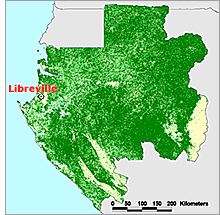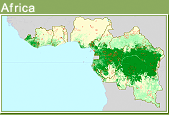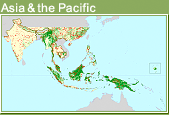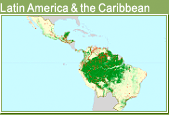Country details
Status of Tropical Forest Management 2005
Africa
Gabon

©UNEP-WCMC 2004
Over the past ten years, Gabon has gone through a profound process of reform affecting the forest and environment. A new forest law has come into force that emphasizes SFM as the overall approach in the PFE. Forestry is, and will remain, one of the pillars of Gabon's economic and social development. The private sector has become a major driver of industrial forest development and the export of forest products. The government has introduced a system to institutionalize community forestry as a way of meeting local needs for timber and other forest products. Gabon has a low deforestation rate, forests rich in valuable timber species and among the best prospects for a healthy and sustainable forest industry. There are still problems – mainly in governance. For example, there is little civil advocacy and few participatory processes in the forestry sector. Protected-area management in Gabon is still in its infancy and requires greater planning and effective enforcement.
Key points
- Gabon has timber-rich and extensive forest resources with a relatively low risk of conversion to other uses.
- The PFE is an estimated 13.3 million hectares, comprising 10.6 million hectares of natural production forest, 2.70 million hectares of protection forest and 25,000 hectares of plantations.
- At least 1.48 million hectares of natural-forest production PFE are thought to be managed sustainably; at least 1.09 million hectares of the protection PFE are considered to be so managed.
- The financial viability of SFM is greatly enhanced by the high quantity and quality of a prime species (okoumé) in a large part of the forest estate, particularly on the coastal plains.
- However, because of its high value, okoumé tends to be over-harvested.
- Community forests may be created in rural forests, but few had been as of 2004.
- High standards for concession management have been developed on paper, but still need to be fully introduced and enforced. There is interest in the application of C&I as a monitoring tool and forest certification has been encouraged.
- Many protected areas do not appear to be managed effectively.
- Management for wild meat and other NWFPs is still largely uncontrolled in forest concessions.

 Africa
Africa  Asia & the Pacific
Asia & the Pacific  Latin America & the Caribbean
Latin America & the Caribbean